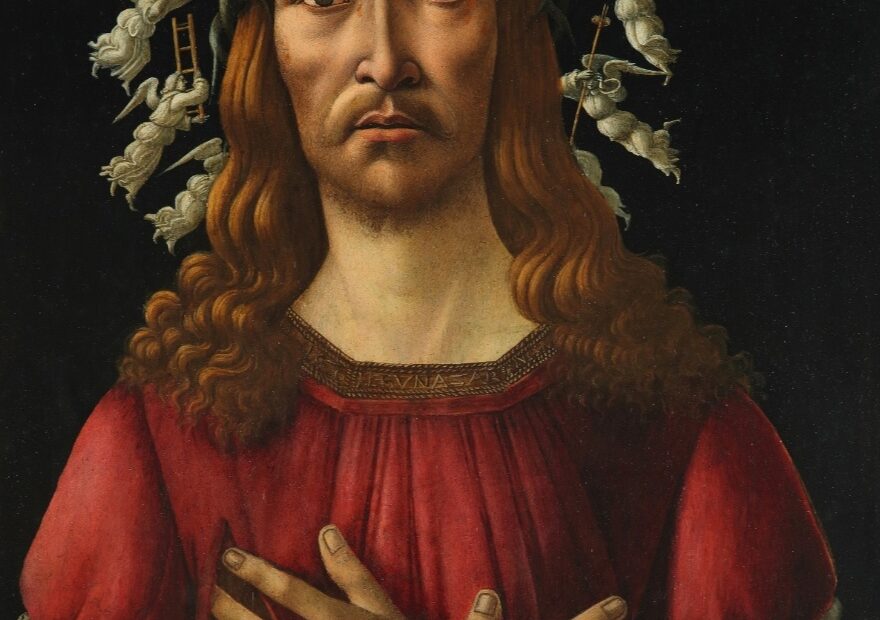Quando, nell’autunno del 2019, il ritratto dell’umanista quattrocentesco Michele Marullo Tarcaniota venne esposto nello stand di Trinity Fine Art presso il Frieze Masters di Londra con un prezzo richiesto di 30 milioni di dollari, il quadro fu presentato come l’ultimo dipinto di Sandro Botticelli ancora di proprietà privata, o almeno l’ultimo di cui si fosse a conoscenza.
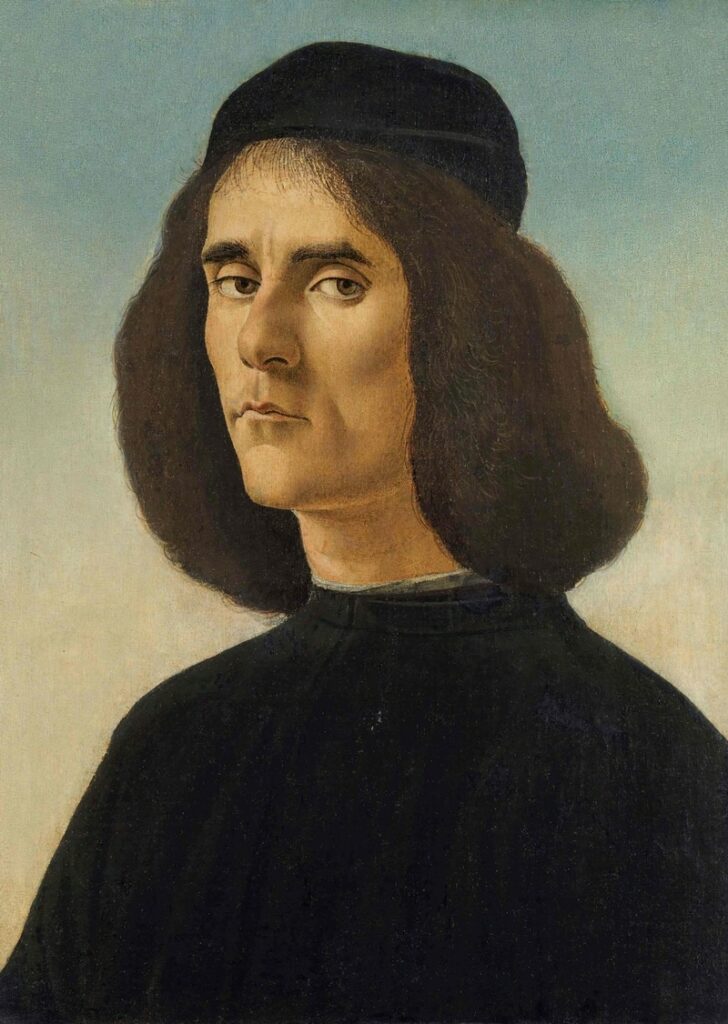
Ciononostante, poco più di un anno dopo, un altro ritratto di Sandro Botticelli ancora in mano a privati giunse sul mercato, questa volta come Lotto n.15 dell’asta Master Paintings & Sculpture (Part I) organizzata da Sotheby’s New York nel gennaio 2021: il Ritratto di giovane con tondo di santo. L‘opera, proveniente da un’importante collezione privata e avente per soggetto un giovane di straordinaria bellezza, fu venduto all’asta per 92 milioni di dollari.
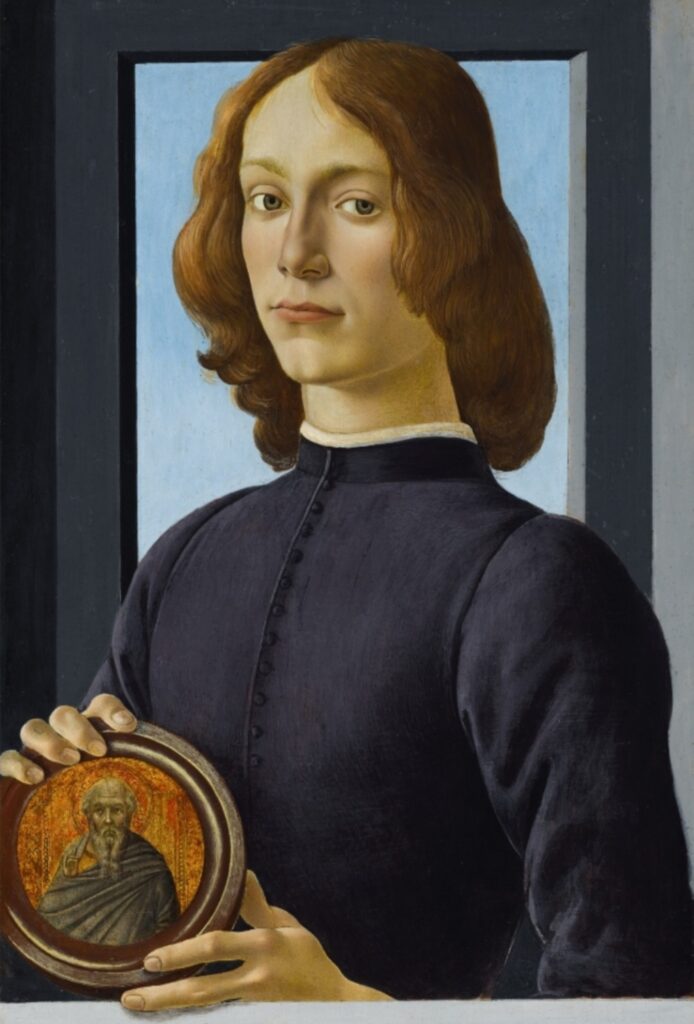
Adesso, un anno dopo la vendita del Ritratto di giovane, un altro Botticelli ancora in mani private va in asta da Sotheby’s New York: Il Cristo dei dolori, un olio e tempera su tavola catalogato come Lotto 14 dell’asta Master Paintings & Sculpture (Part I) che avrà luogo il 27 gennaio 2022. Descritta come proveniente da una collezione di famiglia e prezzata come lotto premium, l’opera ha una stima su richiesta che si dice ammonti a 40 milioni di dollari.
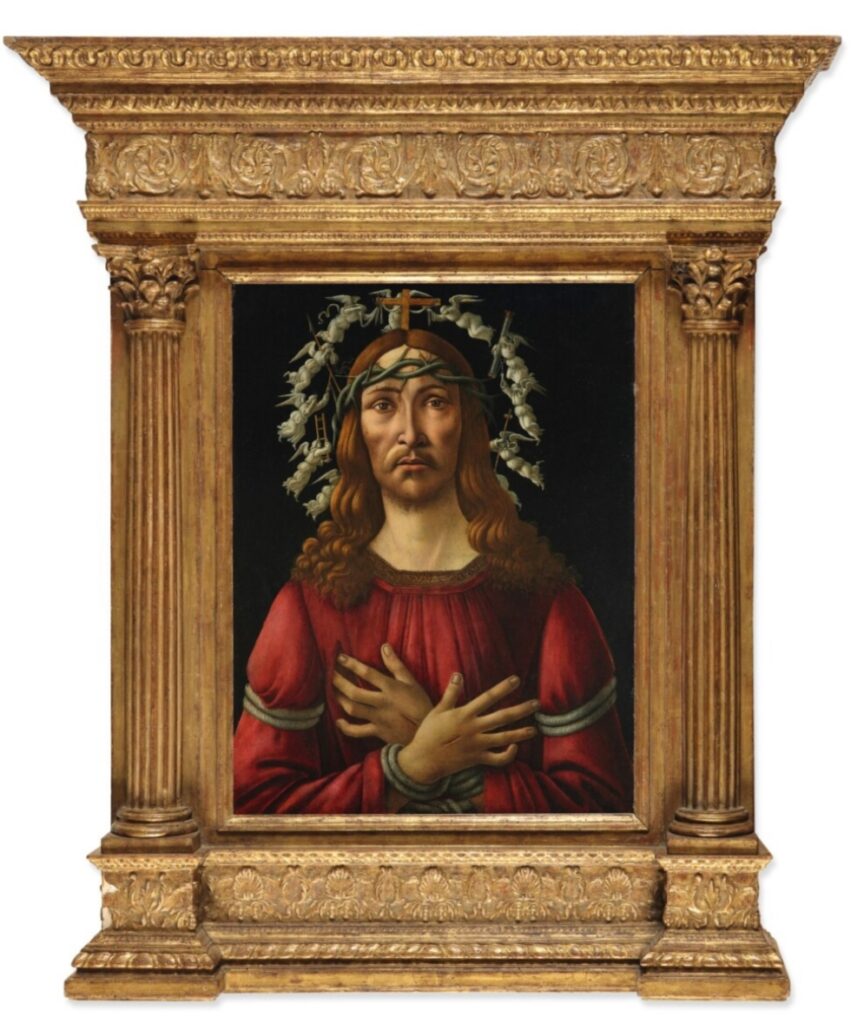
Risalente ai primi anni del Cinquecento e definito dalla casa d’aste “un’importante riscoperta”, Il Cristo dei dolori è dipinto nel linguaggio pittorico cupo e spirituale maturato da Botticelli in seguito ai tumulti religiosi e politici che caratterizzarono la Firenze degli Anni Novanta del Quattrocento. Il dipinto rappresenta Gesù Cristo con il suo simbolismo tradizionale: legato, con indosso la corona di spine, e con i segni della crocifissione visibili sul dorso delle mani. Allo stesso tempo, lo fa ritraendolo a mezzo busto, facendo uso di un’appariscente tunica plissettata rossa in forte contrasto con lo sfondo scuro, e in maniera altamente realistica, tutti elementi che conferiscono all’opera l’aspetto di un ritratto piuttosto che quello del classico dipinto a tema religioso.
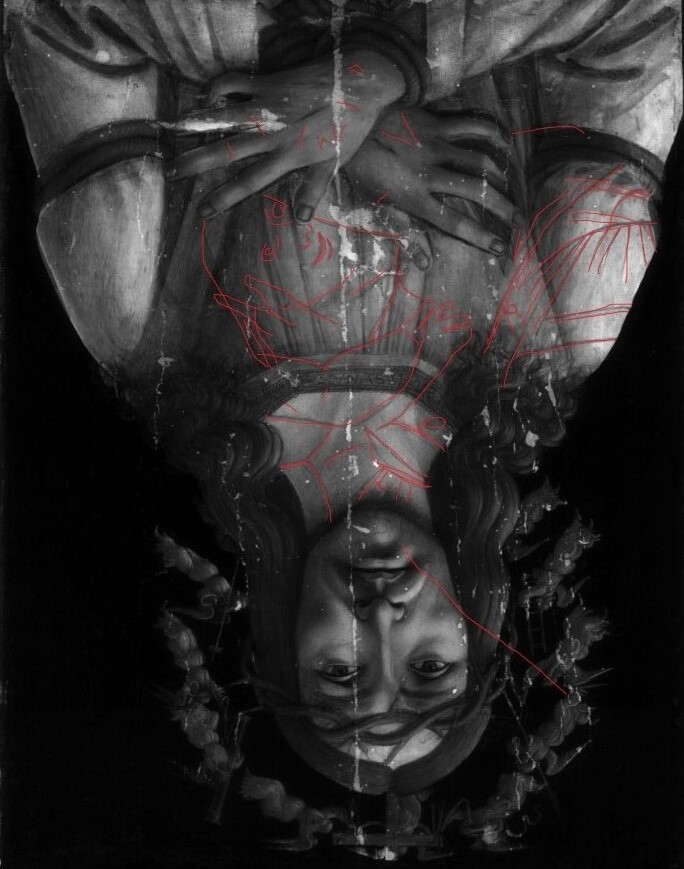
È sotto la superficie, tuttavia, che giace cio’ che attribuisce all’opera un’aura di mistero: esaminato ai raggi infrarossi, il dipinto ha infatti rivelato l’esistenza, in direzione orizzontale, di uno studio preparatorio di Madonna con Bambino. Chris Apostle, direttore del dipartimento Old Masters di Sotheby’s New York, ritiene che il bozzetto sia una Madonna della Tenerezza, composizione tradizionale in cui la Vergine Maria stringe a sé Gesù Bambino guancia a guancia. Sempre sotto infrarossi, sono visibili anche i disegni preparatori per la figura del Cristo dei Dolori; essi riflettono le modifiche successivamente apportate da Botticelli ai tratti del viso e alla postura del soggetto. Sebbene non vi siano basi per determinare se la bozza di Madonna sia opera dello stesso Botticelli o di uno dei suoi aiutanti di bottega, è confortante sapere che il Cristo dei dolori non è solo.
di Aktaia
——————————————
English version
Botticelli with a surprise: Madonna and Child under the Christ on sale at Sotheby’s
When, in the autumn of 2019, the portrait of 15th Century Spanish humanist Michael Tarchaniota Marullus was exhibited at Frieze Masters, London, in the booth of Trinity Fine Art with a price tag of 30 million dollars, it was presented as the last fully-accepted painting by Sandro Botticelli believed to be still in private hands.
Nonetheless, just over a year later, another portrait by Sandro Botticelli still in private hands hit the market, this time at Sotheby’s New York, as Lot 15 of their Master Paintings & Sculpture Auction (Part I), January 2021: Portrait of A Young Man Holding a Roundel. Depicting a young man of staggering beauty and with provenance described as “property from an Important Private Collection”, the artwork sold at auction for over 92 million dollars.
Now, a year after the sale of the Portrait of a young man, another Botticelli still in private hands goes under the hammer at Sotheby’s New York: “The Man of Sorrows”, a tempera and oil on panel catalogued as Lot 14 of their Master Paintings & Sculpture (Part I) auction planned for 27 January 2022. Described as “Property from a Family Collection”, the artwork is priced as a premium lot, with estimate on request rumoured to be 40 million dollars. Dating to the early years of the 16th Century and defined by the auction house as “an important rediscovery”, The Man of Sorrows is painted in the somber and spiritual pictorial language developed by Botticelli after the Florentine political and religious uprisings of the 1490s. The painting depicts Jesus Christ in his traditional symbolism: bound, crowned with thorns and showing on his hands the signs of his crucifixion. However, it does so half-length, with the use of a striking pleated crimson robe against a dark background, and in a highly realistic way, all elements that confer to the artwork more the aspect of a portrait than that of a classic religious painting.
What lies under its surface adds a touch of mystery to the artwork: examined under infrared light, the painting reveals a horizontal sketch of a Madonna and Child left unfinished and later hidden under several layers of paint. Chris Apostle, director of the Old Masters department at Sotheby’s New York, believes the sketch to be an unfinished Madonna of Tenderness, a traditional composition depicting the Virgin Mary with the Christ Child nestled against her cheek. Also visible under infrared light are the initial sketches for the figure of Christ as Man of Sorrows, reflecting changes later operated by Botticelli in his final choice of facial features and posture. Although there are no grounds to determine whether the abandoned Madonna is a work by Botticelli himself or by one of his studio assistants, it is uplifting to know that the Man of Sorrows is not alone.
Author: Aktaia
